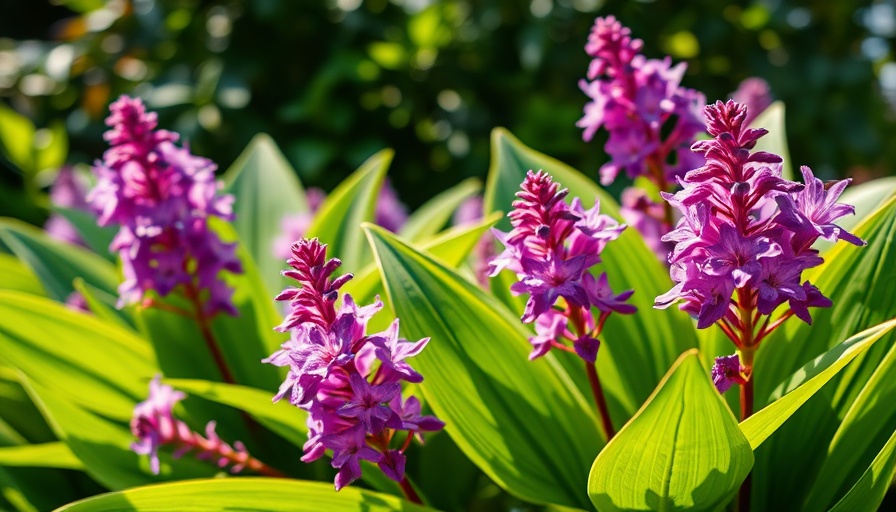
Discover the Joy of Dividing Hostas for a Thriving Garden
For gardening enthusiasts, the act of dividing perennials like hostas can be one of the most rewarding tasks. Not only does it keep your garden looking beautiful and vibrant, but it also allows you to create new plants at no cost. Imagine transforming empty spots in your garden into lush greenery, all through this simple process!
Why Divide Your Hostas?
Dividing hostas serves multiple purposes, enhancing not only the aesthetics of your garden but also the health of your plants. Firstly, it helps reproduce your favorite varieties so you can expand your garden or fill in gaps wherever needed. Secondly, if a hosta starts overtaking its space, dividing it ensures it doesn't overshadow neighboring plants or disrupt the garden's harmony. Lastly, regular division revitalizes the plant itself—when the center begins to yellow or the foliage gets sparse, it's time for rejuvenation!
The Best Time to Divide Hostas
Timing is instrumental when it comes to dividing your hostas. It's commonly recommended that this task occurs during spring or fall. The cooler temperatures and moist soil of these seasons reduce heat stress, giving your hostas a fighting chance to thrive after division. As a personal preference, I favor fall. During this time, hostas prepare to go dormant, requiring less water and nutrients, which eases the transition. However, always monitor temperatures and protect your newly divided plants against unexpected frosts.
Pre-Division Preparation: Get Ready!
Preparation can significantly impact your success with dividing hostas. Initially, make sure to gather your gardening tools: a spade, garden fork, and possibly a sharp knife for tougher roots. Clear the area around the hostas to minimize stress when extracting them from the soil. Before you begin, water your plants thoroughly the day before—you'll find they come out with much less resistance when the soil is moist.
Steps to Divide Hostas Successfully
Once prepared, it’s time to dive into action. Start by gently loosening the soil around the hosta. Using a spade or garden fork, lift the entire clump out of the ground. Shake off excess soil carefully, revealing the plant’s root system. At this stage, inspect the roots for healthy sections and divide using a knife or spade. Ideally, aim to create divisions with a minimum of three growing shoots—or “eyes”—for each piece, ensuring your new plants will thrive.
Aftercare: Caring for Your Divided Hostas
After dividing your hostas, proper aftercare is crucial to their recovery. Replant them in well-draining soil, maintaining the same depth as they were previously planted. Water them thoroughly, and consider applying a light layer of mulch to help retain moisture and regulate soil temperature. Over the next few weeks, keep an eye on your hostas—protect them from extreme weather and ensure they are getting enough hydration but not sitting in waterlogged soil.
Gardening Tips for Maintaining a Healthy Garden
Dividing hostas is just one aspect of a thriving garden. Embrace holistic plant care practices that incorporate organic gardening techniques, such as custom composting for nutrient-rich soil, companion planting to boost plant health, and proper mulching to manage water retention. Tools and resources such as garden soil testing kits can help ensure your plants receive optimal conditions.
Inspiring a Green Thumb: Your Journey Awaits
Overall, the joy contained within gardening, particularly tasks such as dividing hostas, is a wonderful part of maintaining a personal sanctuary. It fosters not just a love for nature but a profound connection to the cycles of growth and renewal that accompany it. So, roll up your sleeves, gather the kids or neighbors, and launch into this gratifying DIY gardening project. Your garden—and every passerby—will thank you!
 Add Row
Add Row  Add
Add 




Write A Comment